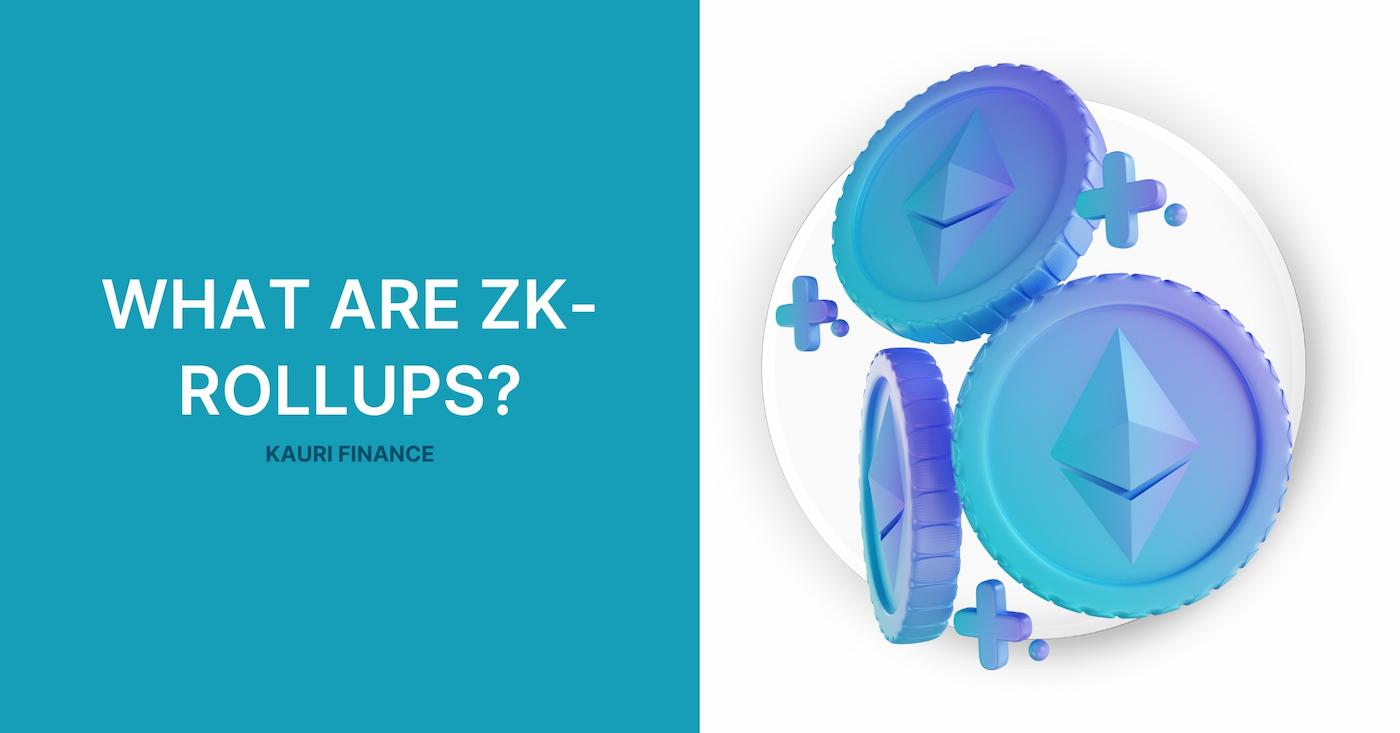
What Are Zk-Rollups (Zero-Knowledge Rollups)?

With the growing popularity of cryptocurrencies and decentralized applications (dApps), blockchains face challenges in providing high transaction speeds and keeping transaction costs low for users. These challenges are hindering the widespread adoption and utilization of blockchain technologies in various industries.
In response to these challenges, zk-Rollups provide an advanced blockchain scaling solution. This technology allows computation and network state to be moved off-chain, while transaction data is stored in compressed form on the main layer of the blockchain. This approach not only significantly increases transaction throughput, but also ensures that the high level of security inherent in the underlying blockchain layer is maintained.
What are Zk-Rollups?
Zk-Rollups, or zero proof of cuts, are a second-level scaling technology that plays a key role in solving blockchain scalability problems. The basic idea behind zk-Rollups is to move computation and transaction state off the main chain (off-chain), with transaction data stored in compressed form on the main layer (on-chain). This significantly increases network throughput, reduces transaction costs, while maintaining a high level of security and decentralization through the use of zero evidence.
Historically, the zk-Rollups technology emerged as one of the solutions to the blockchain scaling problem, which became increasingly important with the growing popularity of cryptocurrencies and decentralized applications. The concept of zero evidence was first proposed in academic papers in the 1980s but it wasn't until the development of blockchain technology and the increasing need for scalability that zk-Rollups began to find practical application in the cryptocurrency ecosystem.
The zk-Rollups technology plays an important role in the development of blockchain by providing the ability to process a large number of transactions with high speed and low cost. This opens new horizons for scaling decentralized applications and creating more efficient and affordable blockchain systems.
How do Zk-Rollups work?
Zk-Rollups work by moving computation and transaction state off the main blockchain (off-chain), while storing transaction data in compressed form in grouped batches on the chain (on-chain). This significantly increases network throughput and reduces transaction costs without sacrificing data security and integrity.
The zk-Rollups process begins by collecting transactions in the outer layer (layer-2), where they are executed and aggregated into batches. Then, instead of writing each transaction separately to the blockchain, the system generates one comprehensive validity proof for the entire batch of transactions. This proof, created using zero-knowledge technology, confirms that all transactions in the batch were performed correctly without revealing the specific details of the transactions themselves.
Zero-knowledge allows a participant in the network to prove to another participant that it knows some information without revealing the information itself. In the context of zk-Rollups, this means that it is possible to prove the correctness of transactions without having to disclose the content of those transactions. This provides a high level of privacy and security while allowing the correctness of transactions to be verified at the main layer (layer-1).
Once a proof of state validity is generated, it is sent to the main chain for verification. Because it requires significantly less data to verify the proof than all transactions on the blockchain, zk-Rollups can significantly reduce the load on the network and speed up transaction processing, while ensuring blockchain immutability and security.
Benefits of zk-Rollups:
- Increased transaction throughput: By moving computation and state outside the main chain and aggregating transactions into batches, zk-Rollups significantly increase the number of transactions that can be processed per unit of time. This makes the blockchain more scalable and able to support more users and applications.
- Lower transaction costs: By reducing the amount of data required to be processed and stored on the main layer of the blockchain, zk-Rollups help reduce transaction fees, making the use of the blockchain more affordable for a wide range of users.
- Inherit the security of the underlying network: Since the final verification of transactions takes place on the underlying layer, zk-Rollups inherit the security and decentralization layer of the underlying blockchain. This means that users can enjoy the benefits of scaling without sacrificing the security of their assets.
Disadvantages and challenges of using zk-Rollups:
- Base layer limitations: Although zk-Rollups significantly increase scalability, they are still limited by the bandwidth and capacity of the underlying network, especially when it comes to storage. This can limit their effectiveness in some scenarios.
- Upgrade Risks: Deploying and upgrading zk-Rollups technology requires careful planning and testing to avoid vulnerabilities and bugs that could jeopardize the security of user funds. The deployment and upgrade process can be complex and risky.
- Liquidity fragmentation and composability: The use of different zk-Rollups solutions can lead to fragmentation of liquidity and increased complexity of interactions between different layers and applications. This can create barriers to the smooth operation of decentralized applications and services.
- Technical complexity: Developing and maintaining solutions based on zk-Rollups requires deep knowledge and expertise in cryptography and blockchain technologies, which can be a barrier for new developers and projects seeking to implement these technologies.
Zk-Rollups compared to other scaling solutions:
Zk-Rollups and optimistic rollups are the two main types of Layer 2 scaling solutions used to increase transaction throughput and reduce transaction costs on major blockchains such as Ethereum.
- The main difference lies in the method of transaction verification: zk-Rollups use zero knowledge to prove the correctness of transactions without revealing sensitive information, while optimistic rollups assume transactions are correct until they are challenged using a "fraud proofs" mechanism. This makes zk-Rollups more efficient in terms of time and resources required to validate transactions.
Practical application of Zk-Rollups:
Zk-Rollups find applications in a wide range of fields, from finance and insurance to logistics and gaming. This is due to their ability to significantly increase the scalability of blockchain-based applications while reducing transaction costs and maintaining a high level of security.
A number of platforms and services already offer solutions based on zk-Rollups technology. These include decentralized finance projects (DeFi), decentralized exchanges (DEX) and other applications that seek to improve the user experience by increasing the speed and reducing the cost of transactions without sacrificing security and decentralization.
Overall, zk-Rollups represent one of the most promising trends in blockchain technology, addressing the scalability challenge without sacrificing security and decentralization.
Conclusion:
Zk-Rollups represent a key element in the evolution of blockchain technology, providing the necessary scalability to support the global expansion of decentralized applications. By effectively reducing transaction costs and increasing network bandwidth, zk-Rollups open up new opportunities for developers and users looking to explore and innovate on Web3.
Kauri Finance plays an important role in this evolution by providing solutions and services that simplify the integration and utilization of zk-Rollups technologies. With the support of Kauri Academy, developers and users can easily learn the basics of zk-Rollups, access advanced tools and incorporate these technologies into their projects, improving their security, scalability and efficiency.
